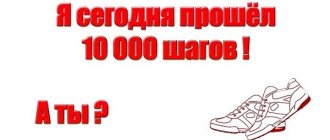What is the difference between a 10,000 meter run and a 10 km run?
The 10,000 meter race should be distinguished from the 10 km race. The first is held at the stadium, the second - on the highway. These are two different, independent disciplines. The International Association of Athletics Federations (IAAF) separately records world records achieved at the stadium distance and on the road.
The 10,000 meter race is an exclusively stadium discipline. Unlike the other long distance race, the 5,000 meters, the 10,000 meters is not held indoors during the winter season.
History of the discipline
The stadium distance of 10,000 meters was included in the program of the 1912 Olympic Games in Stockholm as a men's discipline. It was only in 1988 at the Seoul Olympics that it became available to women. A year earlier, the women's 10,000-meter race was included in the program of the World Athletics Championships.
Along with the 10,000 meter races, a related discipline existed in the twentieth century. In Britain and the United States, instead of 10,000-meter races, races of 6 miles (9.6 km) were held. In the USA, they were held as part of the National Collegiate Athletic Association (NCAA) Championships in Athletics until 1973 inclusive. Now official competitions are held in the classical discipline of 10,000 meters.
The first world record for this distance was recorded in 1911. The result of 30:58.8 was set by French runner Jean Bouin. After this, Finnish athletes began to dominate at a distance of 10,000 meters. This continued until the middle of the 20th century.
Then, from the 1950s to the 1970s, Soviet and European athletes “dominated” the track. Finally, since 1977, athletes from Kenya and Ethiopia have become the main force in this distance. Over the course of a century, the world record was improved by more than four minutes.
World record holder at a distance of 10,000 m Kenenisa Bekele at the Olympic Games in Beijing Source: chinadaily.com
Running technique
At a 1000-meter distance, each runner must optimally implement all the necessary movements to overcome it. It is necessary to strive to achieve the speed at which the athlete plans to run in competitions. To control movements, it is necessary to master not only each element, but also the structure as a whole, improving the entire technique.
With the help of exercises, the desired effect of the movements performed is achieved. When fatigue sets in, you will need experience changing your technique. Running technique is subject to analysis using the stages: start and starting acceleration, running along the distance and finishing.
Start and starting acceleration
The first thing any competition begins with is the correct position at the start. In the 1000 meter race, athletes start the race from a high start. Athletes line up along the starting line. One leg is a push leg, it is placed in front of the line. The second leg is behind, the distance from the first leg is equal to the length of the foot and starts from the push heel. The athlete rests his entire body on his front leg. Both legs are slightly bent.
The opposite arm to the leg in front is bent, while the other arm is pulled back. After the command “March”, without straightening up, the runner starts and rushes forward. To ensure acceleration at the start, you must first gain speed and then gradually reduce it.
Distance running
The step length should be from 190 to 220 cm, with a step frequency of 3.5-4.5 per second. To move your leg forward, you need a body tilt of 4 to 5 degrees, with a permissible deviation of 2 to 3 degrees. This is the optimal indicator. The arms move freely, bent at an angle of 90 degrees, matching the movement of the legs. The body is in balance thanks to the movement of the arms, which helps to run by speeding up or slowing down. The feet are lowered onto the track, on both sides of the line, from the foot of the front foot.
During repulsion, the legs straighten. The angle is from 50 to 55 degrees, the shin is parallel to the pushing leg. The free leg swings, ending with the hip braking during push-off. This gives the runner a bit of a break. Relaxation of the leg occurs after the push, it reaches behind the thigh after bending. The second leg is thrown forward, in the shin area. When pushing off, the hip joint makes a turn, due to which the hips are brought together.
The leg is bent at the knee, softening the landing when placing the foot on the track. At this time, the athlete is helped to rest by a position in which the shin of the leg located behind is pressed against the thigh, preparing to throw the leg forward and then up. This ensures repulsion along with muscle contraction.
This technique requires differentiation and consistency. The push emphasizes the pushing of the big toe. The torso, making a turn, is directed towards the inside of the treadmill, the foot of the right leg turns with the heel outward. The right hand moves actively.
The effect of the technique is as follows: the torso is slightly tilted, the shoulders are straightened, the pelvis moves forward, the head is in a straight position, while the chin should be lowered. The face and neck do not strain, the arms move easily and freely.
Finishing
During the finishing, the athlete's skill is revealed, such as the ability to overcome fatigue and use all his strength to make a breakthrough at the finish line. On the approach from 200 to 400 meters, the torso leans forward, the stride increases in length and speeds up. The run at the finish turns into a sprint. At the initial segment, before the finish line, all efforts should be distributed evenly.
After crossing the finish line, do not stop, but gradually take a step, breathe, exhaling deeply.
Features of the training process
The 10,000 meter race is run at a less intense pace than the 5,000 meter race. However, the first one requires twice as much time to overcome it. Therefore, a distance of 10,000 meters requires the development of special endurance, which allows you to maintain a relatively high pace over a long period of time.
Unlike the 10,000 meters, the 5,000 meters is run at almost the IPC level. Lactate levels rise much faster and in the last part of the distance reaches values at which maintaining a high pace becomes a very difficult task. Therefore, the 5,000-meter race is considered a more difficult discipline. It is not surprising that almost all runners who specialize in the 5,000 meters also compete in the 10,000 meters.
marathon and half marathon training plans and start training today!
The training plan for 10,000-meter runners should focus on developing aerobic power, increasing anaerobic threshold (ATT), and increasing running economy.
Recommendations
For the first 50 meters, the runner uses all the possibilities and accelerates at the highest speed. This way, the athlete will take more advantageous positions and avoid being blocked to the left edge. After this the pace slows down. Having picked up the pace, you need to maintain it and monitor the expenditure of energy, and maintain speed.
200 meters before the end of the distance the speed increases. 100 meters before the end of the distance the transition is calculated. In this area you need to give it your all.
Regular training and technical preparation will help you run successfully. Not only the physical fitness of the athlete is of great importance, but also the quality of his preparation, which he has achieved, observing all the requirements for middle-distance running. Otherwise, his success will be far from ideal.
Standards for assigning ranks and performing ranks
The standards for assigning titles and performing categories in athletics are approved by the Ministry of Sports of Russia and are published in the form of a regulatory document - the Unified All-Russian Sports Classification.
The following standards are currently in effect:
Men:
- third sports category – 38:40.24.
- second sports category – 35:30.24
- first sports category – 33:10.24
- sports category candidate master of sports (CMS) – 30:50.24
- sports title master of sports (MS) – 29:25.24
- sports title of master of sports of international class (MSMK) – 28:05.24
Women:
- third sports category – 45:30.24
- second sports category – 41:50.24
- first sports category – 38:40.24
- sports category candidate master of sports – 36:10.24
- title of master of sports – 34:00.24
- title of master of sports of international class – 32:00.24
There is also a rule about reaching a certain age to meet the standards of MSMK, MS and CMS. The KMS standard is met from the age of 14, the MS standard from the age of 15, and the MSMK standard from the age of 16.
How to get a rank in running in theory and practice
How to improve the result?
The first thing you need to remember when playing sports is that to achieve sports success, you need desire and hard work. In order to constantly improve your success, you need to train every day, not paying attention to pain or fatigue.
In order to improve your running results, experts advise taking the following steps:
- Run every other day. This will help you gradually get used to the stress. Within a week, you will feel that it has become easier for you to cover distances that were difficult to run at the very beginning. Also, running every other day has a positive effect on heart rate, weight loss, and increased endurance.
- Buy athletic shoes that are comfortable for you and your feet. Don't forget to change your shoes regularly. At least once every 6 months. In order not to forget the date you purchased your sneakers, write down the date.
- Don't forget to warm up before running and don't stop doing it even when you're not planning to run. This will allow you to keep your muscles toned.
- Drink water periodically during your workout. If you exercise without drinking fluids, you may become dehydrated.
We will be glad if our advice will help you be successful and healthy.
Popular competitions
At the Olympic Games, the 10,000-meter race takes place in one stage, which is also the final stage. If more than 20 people take part in the race, they are divided into two groups. When athletes cover 115 meters of the distance, they occupy a common track.
At the 2016 Olympics in Rio de Janeiro, Briton Mo Farah won, thus becoming the sixth athlete to win gold twice at the Olympics in this distance. It is noteworthy that Mo Farah won despite falling after a collision with American Galen Rapp.
Mo Farah after winning the 10,000m in Rio. Photo: Paul Gilham / source: thetimes.co.uk
As at the Olympic Games, at the World Athletics Championships the 10,000 m race takes place in one stage. The last time preliminary heats at the World Championships were held was in 1997. To get to the championship, you must meet the time standard set by the IAAF. Being among the top 15 runners at the World Cross Country Championships is also equivalent to meeting the standard.
A popular tournament among spectators is the European Cup 10,000 meters. Each participating country can enter up to six runners in the men's and women's races. The results are summarized separately in the individual and team competitions. Russian athletes have experience participating in such a tournament. In 2010, the Russian men's team took third place in the team competition.
Green Mile
“Each of us must die, there are no exceptions. But, Lord, sometimes “The Green Mile” seems so long...” From the film “The Green Mile”
“The Green Mile” is a drama filmed in 1999 based on the novel of the same name by Stephen King. The events take place in a federal prison, in block "E", where prisoners awaiting execution in the electric chair are kept. The prisoners walk towards it along a corridor whose floor is painted green. Hence the name “green” or “last mile”.
This name is symbolic. It is not equal to 1609.34 meters.
The Green Mile is the last route a prisoner travels.
The film received several prestigious awards, and people cried at the screens while watching it. John Coffey, sentenced to death, was actually innocent, but he was executed anyway.











